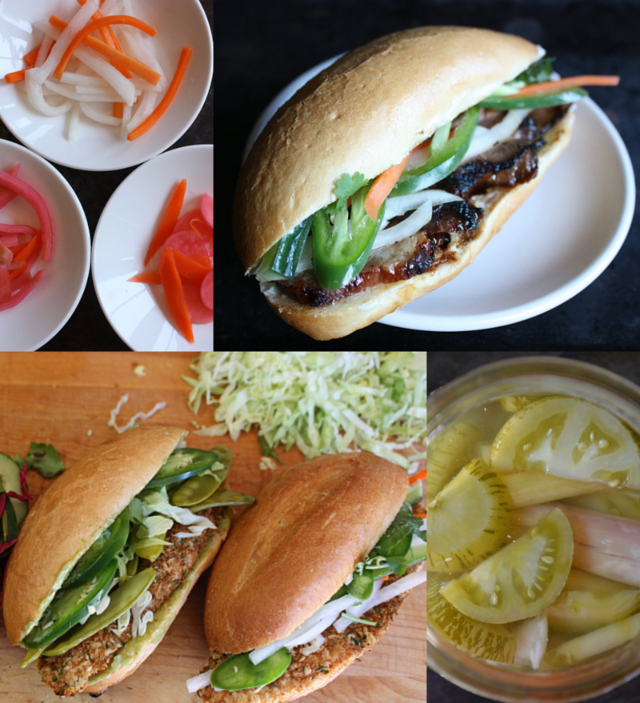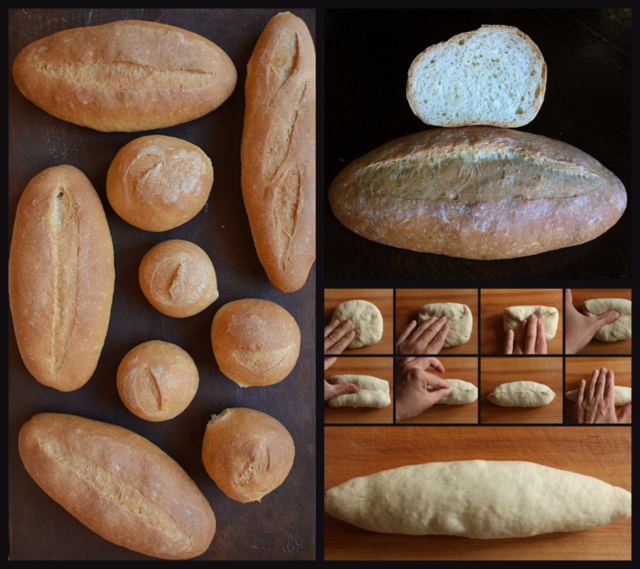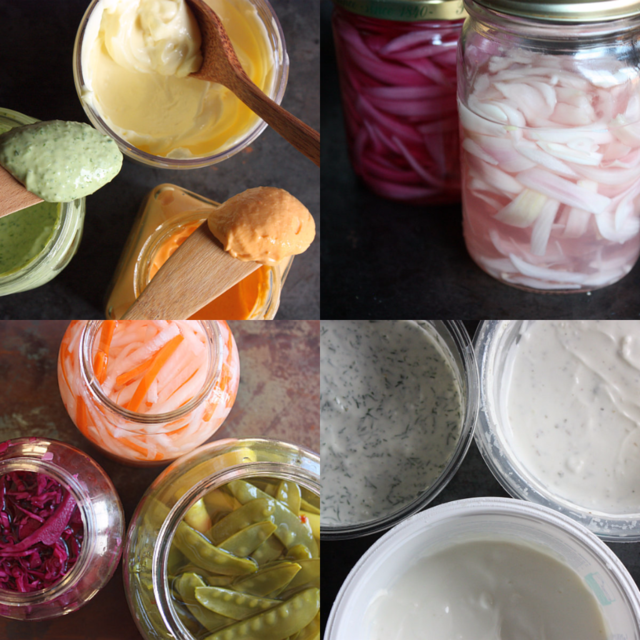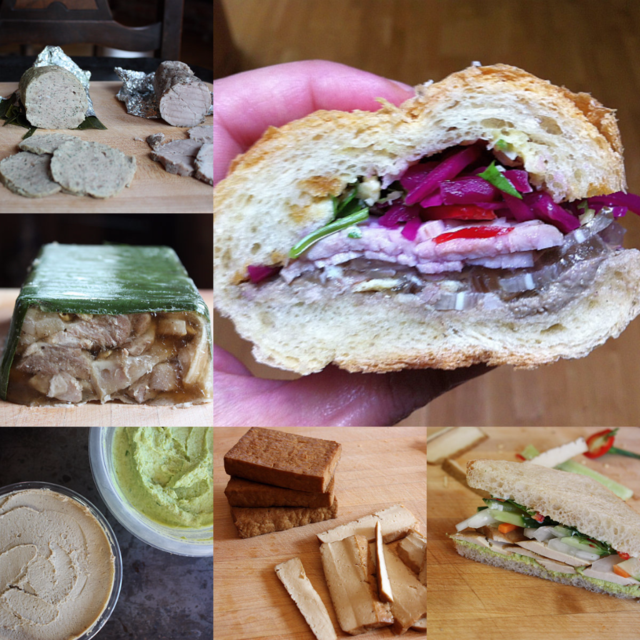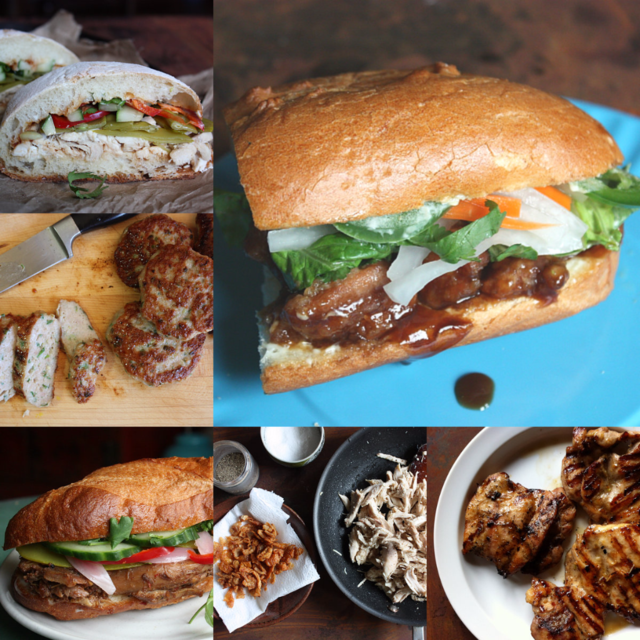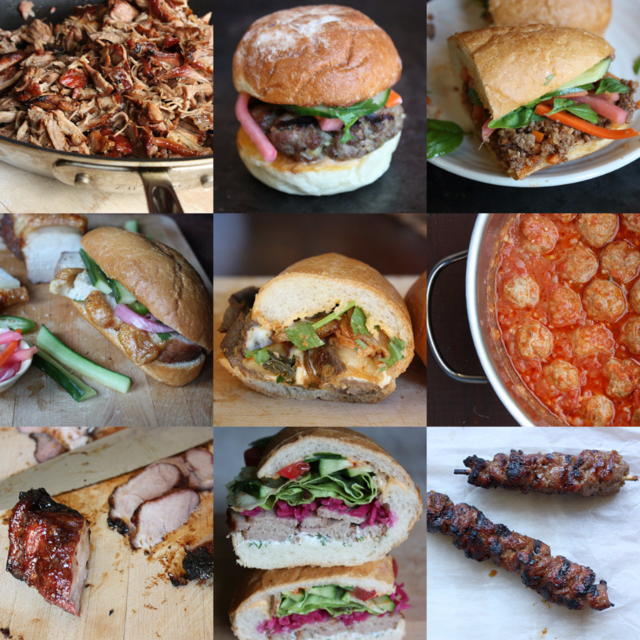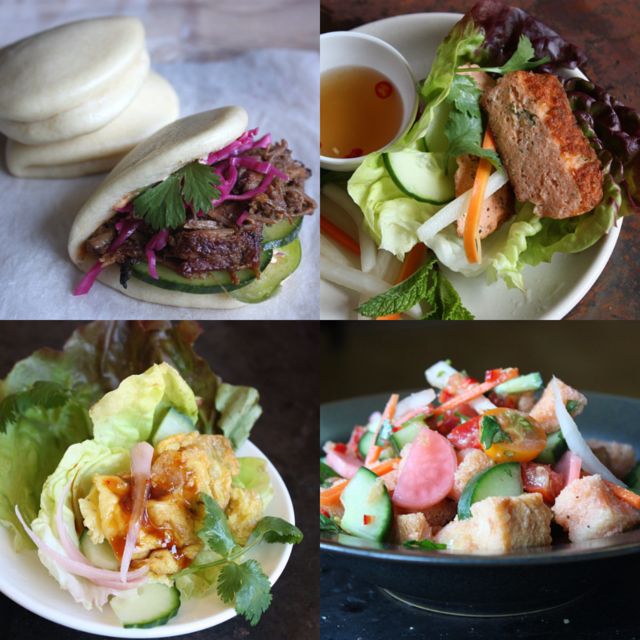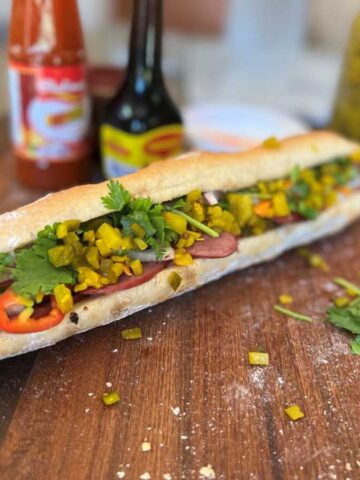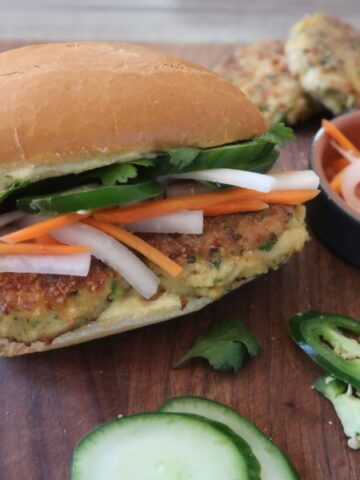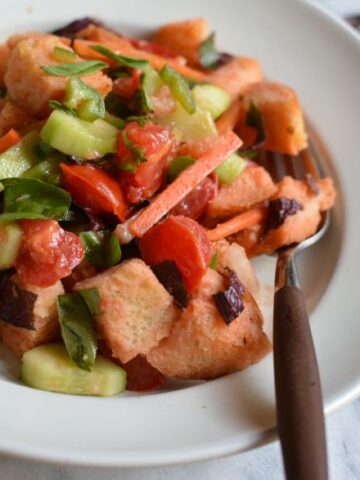William Daley of the Chicago Tribune called yesterday to talk about the book. He’s been a tremendous supporter of my work since Into the Vietnamese Kitchen came out in 2006, describing me as the Julia Child of Vietnamese cooking. I should have had that tattooed somewhere but I’m a chicken for pain. One of the things that Bill commented on was the gorgeous banh mi photography.
When I got the first copy of The Banh Mi Handbook, the images seemed nearly 3-dimensional, to leap from the page. I recalled photographer Paige Green telling me how happy she was to get the gift of beautiful food to shoot.
We worked really hard on the photos for the book, as I wrote about the shoot earlier this year. There’s a team involved and prior to the actual shoot, I send out a gallery of photos that I’ve taken while writing the book. The homegrown banh mi photos are for reference and give us a jumpstart on planning how each shot will go, the props, styling options, etc.
There is only so much space in a book that can go toward pictures. Otherwise, we’d have to cut the instructions short and I don’t think you’d like that! But I have the photos and want to share them with you so you’ll be fully informed and inspired. Why hold back, right? Here we go, from the beginning to the end of The Banh Mi Handbook. About 90% of the recipes are represented here. I imagine that you can figure out the rest.
Bread – Do you have to bake your own? No way! There’s a guide to buying bread. For diehard DIYers who want bake their own banh mi rolls, there’s the recipe. What I did in my home kitchen for 3 months included these images:
Mayonnaises, sauces and pickles – Lots of bases covered in this chapter, from the basic mayonnaise to flavored ones, to eggless renditions and a marvelous yogurt sauce too. I think I’ve now spent about a month of my life making mayonnaise.
The pickles are quick and easy. As I say in the book, keep a pickle or two in your fridge and banh mi can be made in a snap. The major ones are here. The top photo in the post include variations mentioned in the book.
Cold cuts – I initially called the chapter “charcuterie” but decided that the French term was too fancy. In Vietnamese, they’re called do nguoi, literally cold items. Hence, the chapter was titled “Cold Cuts,” appropriate and accessible.
There are simple approaches to the classics (garlicky pork, silky sausage, liver pate and headcheese) and well as vegetarian edamame pate and Maggi seasoned tofu. Veggie lovers and vegans shouldn’t be shorted. What's in my hand? That's a banh mi selfie of a dac biet special combo made with the citrusy red cabbage pickle.
Chicken – People love chicken for its ease, versatility, and flavor. I tinkered with boneless chicken thighs, breast, ground chicken and even rotisserie chicken to fashion banh mi.
The little fluffy, crisp roll (from Whole Foods!) holds rotisserie chicken, then there’s the spicy chicken sausage patties, Sri Lankan black curry chicken banh mi, rotisserie chicken and cracklings, and Hanoi grilled chicken off the grill. The drunken chicken banh mi is deliciously dripping with tangy sauce.
Seafood – I put lots of big flavor into this small chapter.
There’s a cross-section of three fishwich banh mi, the salmon herb patties cooling, wok-seared shrimp banh mi, shrimp, in caramel sauce, and sardine and tomato sauce atop crostini. The Viet oyster po’ boy banh mi was fun to make and even better to eat. I tried a lot of kinds of presentations and breads while writing the book.
Pork and Beef – A hefty collection of recipes that spans many cuts and cultures.
Caramel sauce pulled pork, beef curry sliders, star anise and lemongrass sloppy Joe, crispy roast pork (thit heo quay), Korean beef, kimchi and cheese (popular in Seoul’s Costco), Viet meatballs, Chinese barbecue pork, cross-section of Viet home-style Doner kebab and lemongrass pork skewers.
Vegetarian – People often think of banh mi as a meat-centric affair but that ain’t so and doesn’t have to be the case.
Coconut curry tofu, grilled portobello, egg and tofu pancakes (so easy and good!), lemongrass sriracha tempeh banh mi courtesy of author and expert Randy Clemens, Thai fried egg omelet banh mi, and gingery tofu cooked in a skillet and stovetop grill (note the different textures).
Alternative banh mi – Baguette is a popular kind of bread in Vietnam but so is the Chinese steamed bun (bao). Can you stuff them like banh mi? Yes you can, and it turns out delicously well.
If you don’t want to eat carbs or wheat gluten, use gluten-free bread or make banh mi lettuce wraps. In the photo above, you see the salmon herb patties and Thai egg omelet mentioned in the recipe. And with all that bread around the house, why not try a banh mi take on Italian panzanella bread salad.
Banh mi can swing in many directions and I hope you’ll have it your way. Bookmark this page and return to it as you cook through The Banh Mi Handbook.
The book has gotten some great press near and far, large and small. Check the top of the right-hand sidebar for the a round up. Ten Speed Press ordered a reprint already (yes, 3 weeks after release).













